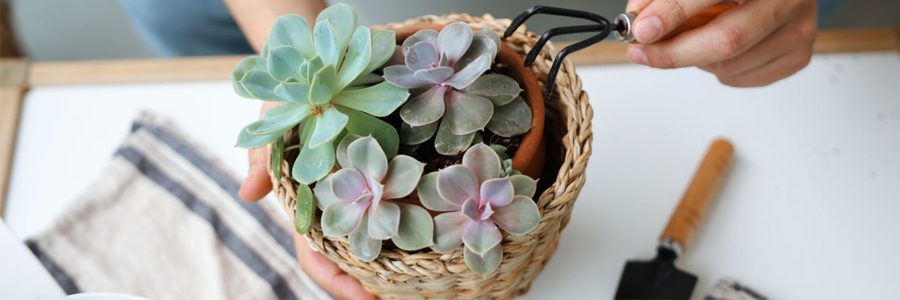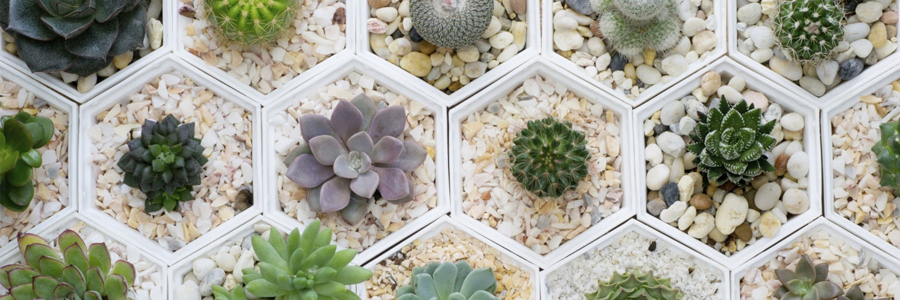Pest and Disease Control in Succulent Plants
Succulent plants, with their unique and attractive appearance, have become increasingly popular among plant enthusiasts. However, like all plants, they are susceptible to pests and diseases. Understanding how to identify, treat, and prevent these issues is crucial for maintaining the health and beauty of your succulent collection.
Common Pests in Succulent Plants
Mealybugs
Identification: Mealybugs are small, soft – bodied insects covered in a white, cotton – like substance. They are often found in clusters on the leaves, stems, and in the leaf axils of succulents. These pests feed on the sap of the plant, causing the leaves to yellow, wilt, and in severe cases, drop off.
Treatment: Isolate the infected plant to prevent the spread of mealybugs to other succulents. You can use a cotton swab dipped in rubbing alcohol to gently wipe off the mealybugs. For more severe infestations, insecticidal soap or neem oil can be applied. Make sure to cover all parts of the plant, including the undersides of leaves and the joints where mealybugs tend to hide. Repeat the treatment every few days until the pests are completely eradicated.
Prevention: Regularly inspect your succulents for signs of mealybugs, especially when bringing new plants into your collection. Keep the plants in a well – ventilated area as mealybugs thrive in humid and stagnant conditions. Avoid over – fertilizing, as overly lush growth can attract these pests.
Aphids
Identification: Aphids are tiny, pear – shaped insects that come in various colors, including green, black, and brown. They are usually found on the new growth of succulents, such as the tips of stems and young leaves. Aphids also feed on plant sap, causing the leaves to curl, distort, and develop yellow spots.
Treatment: A strong stream of water can be used to dislodge aphids from the plant. Insecticidal soap or neem oil can also be effective in controlling aphid populations. Ladybugs and lacewings are natural predators of aphids, and releasing them in your garden (if possible) can help keep aphid numbers in check.
Prevention: Keep your succulents healthy by providing proper light, water, and nutrients. Aphids are more likely to attack stressed plants. Regularly clean the area around your succulents to remove any debris that might attract aphids.
Spider Mites
Identification: Spider mites are extremely small pests that are difficult to see with the naked eye. However, their presence can be detected by the fine webbing they produce on the leaves of succulents. Infested leaves may develop yellow or brown speckles, and over time, the leaves may turn bronze or red and eventually fall off.
Treatment: Increase the humidity around the plant, as spider mites prefer dry conditions. You can use a spray bottle to mist the plants regularly. Insecticidal soap or miticides can be used to treat spider mite infestations. Make sure to thoroughly cover the entire plant, including the undersides of leaves where spider mites often reside.
Prevention: Keep the air around your succulents moderately humid, but avoid over – watering. Regularly clean the leaves of your succulents with a damp cloth to remove dust, as spider mites are attracted to dusty environments.
Common Diseases in Succulent Plants
Root Rot
Identification: Root rot is a fungal disease caused by over – watering or poorly drained soil. Symptoms include soft, mushy roots that may be brown or black in color. The plant may also show signs of wilting, yellowing of leaves, and stunted growth.
Treatment: Remove the plant from its pot and carefully wash off the soil from the roots. Trim away any rotted parts of the roots using a clean, sharp pair of scissors. Repot the plant in a well – drained soil mix and reduce watering frequency. Allow the soil to dry out completely between waterings.
Prevention: Use a well – drained soil mix specifically formulated for succulents. Ensure that the pots have drainage holes and that excess water can freely escape. Water your succulents only when the soil is dry to the touch.
Powdery Mildew
Identification: Powdery mildew appears as a white, powdery coating on the leaves, stems, and flowers of succulents. It can cause the leaves to distort, turn yellow, and eventually die. This fungal disease thrives in humid conditions with poor air circulation.
Treatment: Remove the affected parts of the plant and discard them to prevent the spread of the disease. Fungicides containing sulfur or potassium bicarbonate can be applied according to the product instructions. Increase air circulation around the plants by spacing them out and ensuring good ventilation.
Prevention: Avoid over – watering and keep the leaves dry when watering. Provide sufficient space between succulents to allow for proper air movement. If growing succulents indoors, use a fan to improve air circulation.
Leaf Spot
Identification: Leaf spot is characterized by the appearance of small, circular or irregular – shaped spots on the leaves of succulents. The spots can be brown, black, or red, depending on the type of fungus or bacteria causing the disease. In severe cases, the spots may merge, leading to the death of the leaf.
Treatment: Remove the infected leaves and dispose of them. Fungicides can be used to treat leaf spot, but it’s important to identify the specific pathogen causing the disease before choosing a fungicide. Improving air circulation and reducing humidity can also help control the spread of the disease.
Prevention: Avoid overhead watering, as wet leaves are more prone to leaf spot. Water the plants at the base and in the morning, so the leaves have time to dry during the day. Keep the area around the succulents clean and free of debris.
In conclusion, maintaining the health of your succulent plants requires vigilance in pest and disease control. By regularly inspecting your plants, providing proper growing conditions, and taking prompt action at the first sign of problems, you can ensure that your succulents remain healthy and vibrant.


